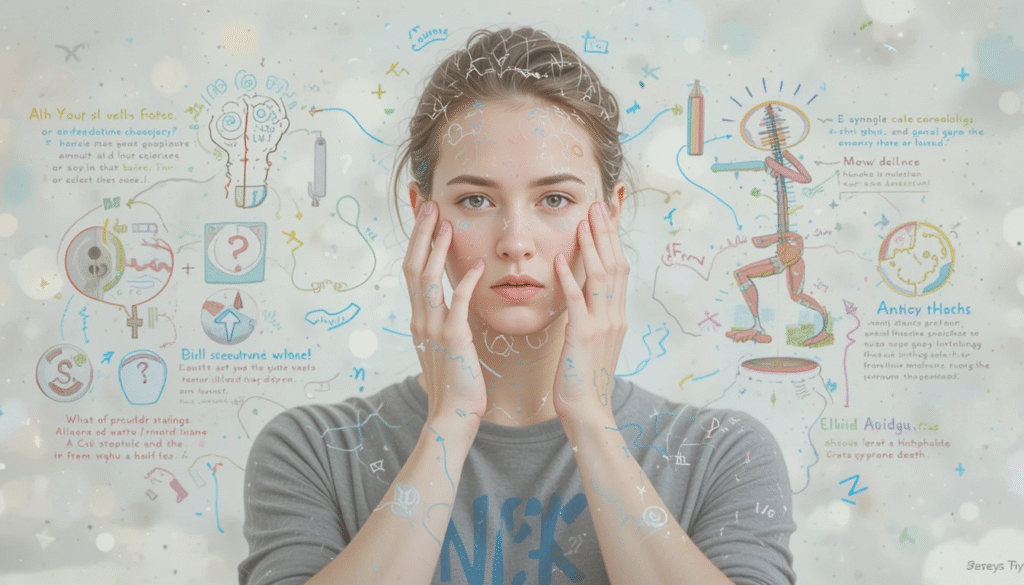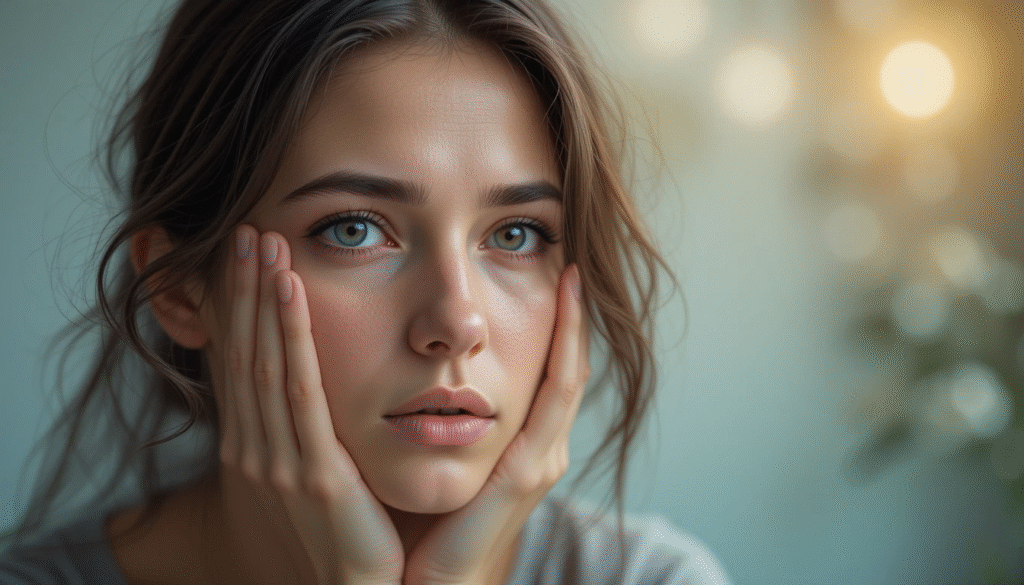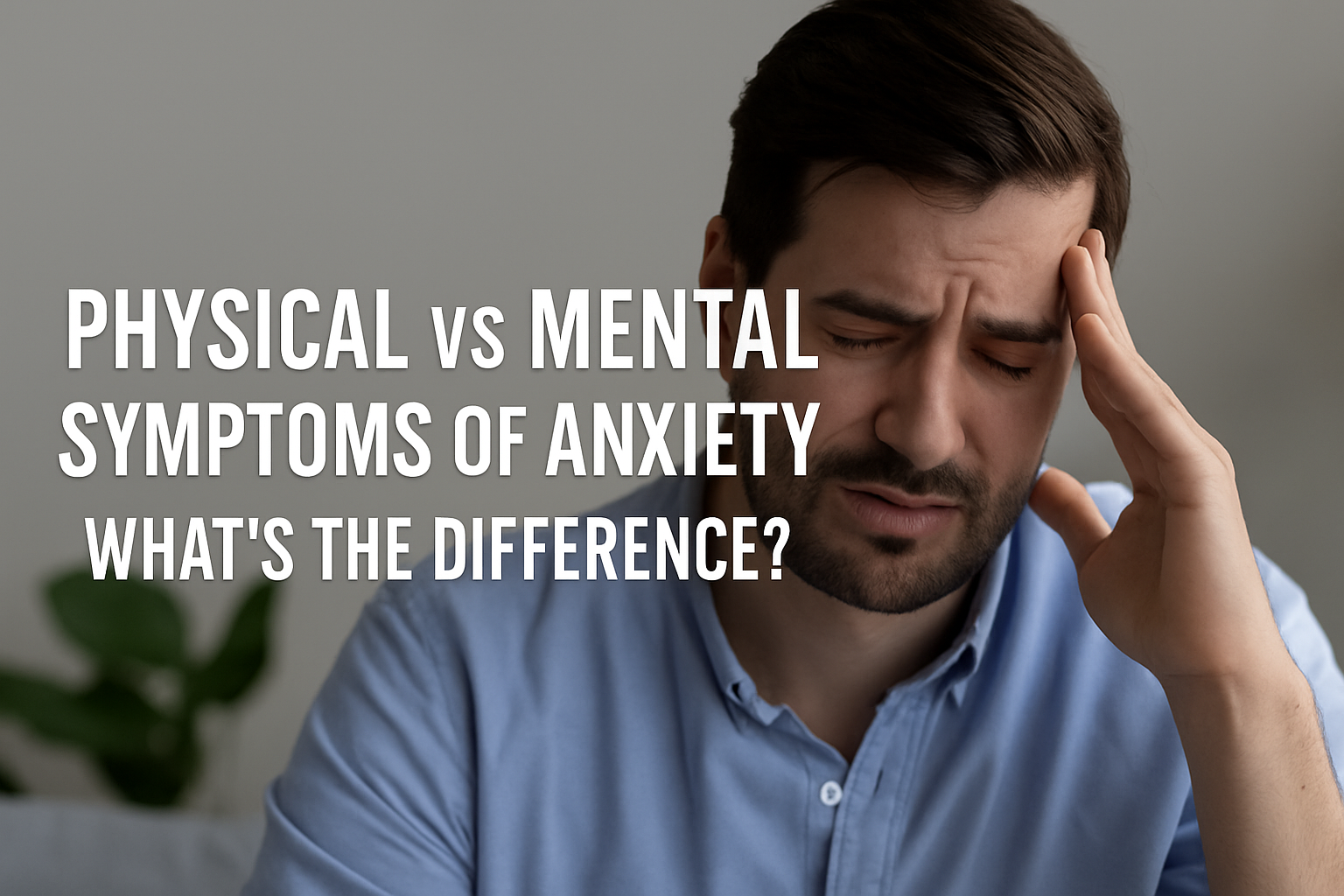
Introduction
Many adults feel stressed anxious or overwhelmed from time to time. But when these feelings become frequent or intense they may signal a deeper issue. The challenge often lies in recognizing symptoms of anxiety especially when they appear in different forms.
Some signs show up in the body while others affect the mind. This blog will help you understand the difference between physical and mental symptoms of anxiety and why knowing this can support better emotional and physical health.
What Are Symptoms of Anxiety?
Symptoms of anxiety are the ways your body and brain respond to stress fear or worry. These reactions can show up in different ways depending on the person and situation. Some are obvious like a fast heartbeat while others are hidden like constant overthinking.
Recognizing whether a symptom is mental or physical can guide better self-care. Let’s explore both categories in depth.
Physical Symptoms of Anxiety

These are the signs that affect your body directly. The nervous system responds to a threat by preparing to “fight or flee” and this triggers real physical changes.
1. Rapid Heartbeat
Many adults feel their heart pounding during stressful moments. It is a natural reaction but frequent heart racing can be one of the ongoing symptoms of anxiety.
2. Shortness of Breath
Anxious breathing tends to be shallow or quick. It may feel like you can’t get enough air even when sitting still.
3. Muscle Tension
The body holds stress in the muscles especially the neck shoulders and jaw. Over time this causes pain or tightness.
4. Sweating
Even without heat or exercise some people sweat when they feel anxious. It is the body’s way of staying alert.
5. Stomach Problems
Anxiety often shows up in the gut. Nausea bloating cramps or sudden bowel movements can all be signs.
These physical changes are real and should not be ignored. They are how anxiety travels through the body not just the mind.
Mental Symptoms of Anxiety

These affect the way you think feel and interact. They may not be visible but they are just as powerful.
1. Constant Worry
One of the key symptoms of anxiety is excessive worrying. It often centers on “what if” thoughts that repeat throughout the day.
2. Irrational Fears
Anxiety may cause fears that are not in line with the actual situation. Adults may fear failure embarrassment or loss without clear cause.
3. Overthinking
Some people replay conversations plan future disasters or second-guess every decision. This endless mental loop creates tension.
4. Difficulty Focusing
When the mind is filled with anxious thoughts it becomes hard to focus on tasks. This affects work school or even simple conversations.
5. Feeling Detached
Some adults report feeling numb or “not real” during high anxiety moments. It can feel like being outside your own body or floating away from reality.
Key Differences at a Glance
| Feature | Physical Symptoms | Mental Symptoms |
|---|---|---|
| Affects | Body (organs muscles nerves) | Thoughts emotions and mental patterns |
| Common Signs | Heart racing muscle tension sweating | Worry fear overthinking |
| Visible to Others | Often yes | Usually no |
| Triggered By | Nervous system reaction | Thoughts beliefs past trauma |
| Can Be Confused With | Illness heart problems digestive issues | Mood swings stress indecision |
Do Physical and Mental Symptoms Appear Together?
Yes. Most people experience a mix of both. For example you might feel chest tightness and have racing thoughts at the same time. The brain and body work together so anxiety shows up in layers.
That’s why treating just the body or just the mind may not be enough. A full picture approach helps manage both sides of anxiety.
How to Manage the Symptoms of Anxiety
There are healthy ways to care for both physical and mental symptoms:
For Physical Signs:
- Practice deep breathing or gentle stretching
- Take regular breaks to walk or move
- Explore calming tools like heat pads or guided body scans
- Some adults prefer natural calming products such as herbal teas or light pheromone perfumes to create a peaceful mood
For Mental Signs:
- Keep a daily journal to express thoughts
- Talk to a counselor or therapist
- Limit overexposure to news or stress triggers
- Many adults explore mindfulness apps or calming music
Each person finds comfort in different tools. Some lean toward mental techniques others focus on body care. A mix of both often works best.
Why Awareness Matters
When adults learn the symptoms of anxiety they stop blaming themselves for how they feel. Instead of thinking “I’m weak” they understand “my body and brain are responding to stress.”
This shift opens the door to healing and self-care. Awareness leads to action and action reduces suffering.
Final Thoughts
Both physical and mental symptoms of anxiety are real and deserve attention. They don’t mean you are broken. They mean your body and mind are working hard to protect you from stress even if there is no real threat.
By recognizing the signs early you can take gentle steps to restore balance. A peaceful life starts with understanding your own experience and responding with care.
FAQs
1. Can anxiety cause real physical illness?
Yes chronic anxiety can lead to digestive issues muscle pain or sleep problems.
2. Are mental symptoms harder to treat than physical ones?
Not always. Both can be managed with the right approach and support.
3. What is the most common symptom of anxiety?
Excessive worry is often the most reported by adults.
4. Can physical symptoms happen without mental signs?
Yes some people experience physical anxiety without knowing it’s caused by worry or fear.
5. Do pheromone perfumes reduce anxiety?
Some adults explore pheromone-based scents to create calming effects or enhance emotional comfort.
6. Can anxiety symptoms go away on their own?
Mild symptoms may fade but ongoing anxiety often needs conscious care and support.
7. Should I see a doctor for physical symptoms of anxiety?
Yes if symptoms are intense or ongoing it’s wise to get checked to rule out other issues.
8. Can breathing exercises help both kinds of symptoms?
Yes deep breathing calms the body and focuses the mind.
9. Are children affected by the same symptoms?
They may show different signs but anxiety affects all ages.
10. What lifestyle habits reduce both types of anxiety symptoms?
Regular movement sleep healthy food journaling and emotional support can help a lot.

